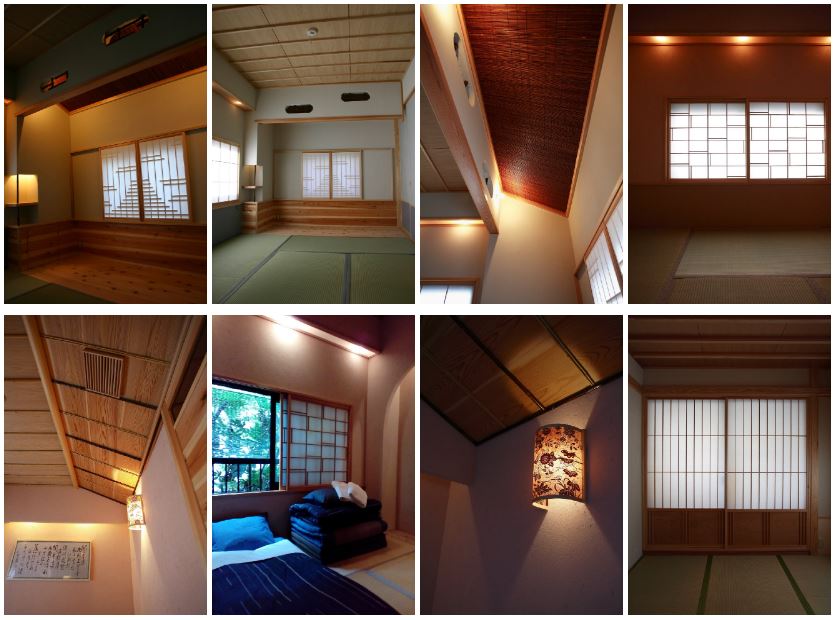Japan is actually 5-yen for you, not piece of cake meaning but => https://www.theikebanashop.com/blog/go-en-and-go-en
To live in Japan is NOT expensive anymore, bit more than 5 yen, but actually
very cheap these days. It must have been some kind of legend or misunderstanding
or exaggerated media saying about JPY10,000 melon (still there in many
department stores not for daily consumption) and JPY10,000 Mango (nothing
to do with Urushi Japanning even they are in same family) and JPY10,000
strawberry ....... but truth is that locals usually enjoy eating JPY500-JPY1,000
melon/mango/strawberry, actually we just bought and enjoyed JPY798 strawberries
from local supermarket in Asakusa. For your rate comparison, we pick some
everyday "local" price range at this column. Average can determine
that Tokyo is way less than London, Paris, Frankfurt, Zurich, New York,
Vancouver, Melbourne, Singapore, but maybe similar to Seoul, Taipei, Shanghai,
HongKong. Anyway, life should not be discussed by 5-percent or 10-percent
or money-exchange-rate. If your heart tells you, it's the high time that
you should visit Japan. Would you like to live in Tokyo already? RealTokyoEstate and SMI:RE have lists of apartments and houses. Still worry about money? Hope you
could taste a pot of green tea with this page (happiness doubled when we share, worry minimized when we share, help
"others" because there is no difference between you and them).
2 liter (2,000cc) mineral water : 88yen - 198yen
0.5 liter (500cc) mineral water at station kiosk : 100yen - 150yen
A cup of coffee at Starbucks : 380yen - 1,400yen
A cup of coffee at 7-ELEVEn : 120yen - 300yen
McDonald's set menu : official-mcdonalds-menu
MOS burger (the super better one!) : official menu
A can of drink from vending machine : 100yen - 200yen
Same softdrink at super market : 48yen - 128yen
Taxi upto 1km (for example, Asakusa - Tokyo Ryokan) : 500yen (max. 4 passengers)
Metro between Asakusa and Ueno (2.2km) : 178yen (ic card) or 180yen (cash)
Metro between Asakusa and Shibuya (14.3km) : 252yen (ic card) or 260yen
(cash)
Train (TX Line) between Asakusa and Akihabara (3.1km) : 210yen (ic card)
or 210yen (cash)
Shortest JR ride (a few stops upto 3km) : 146yen (ic card) or 150yen (cash)
Toei bus ride (for example, Asakusa - Tokyo) : 210yen (ic card) or 210yen
(cash)
Loaf of bread : 100yen - 500yen
Can of beer : 100yen - 300yen
Jug of beer at bar : 280yen - 780yen
Western breakfast : 500yen - 980yen
Japanese breakfast : 400yen - 780yen
An apple : 100yen - 300yen
A mango : 500yen - 5,000yen (really!)
A melon : 500yen - 10,000yen (really!)
Lunch box : 300yen - 1,080yen
Ramen noodle : 350yen - 1,500yen
Kake (plain) soba : 300yen - 1,000yen
Kake (plain) udon : 300yen - 1,000yen
Sushi lunch set : 1,000yen - 5,000yen
Sushi dinner set : 3,000yen - 30,000yen
Pair of socks (including the five-toes) : 100yen - 500yen
Domestic post card stamp (anywhere in Japan) : 63yen
International post card stamp (anywhere around the world) : 70yen
Optic Fiber Cable Internet (upto 1Gbps) without limitation : 5,000yen -
6,000yen per month
Optic Fiber Cable Internet (upto 200Mbps) without limitation : 4,000yen
- 5,000yen per month
SIM (around 1Mbps - 50Mbps) contract without limitation : 1,100yen - 3,300yen
per month
SIM (max.128kbps) contract without limitation : 330yen for 6 months (yes,
55yen per month)
Movie at theater : 1,000yen - 2,000yen
Disneyland One Day Passport : 7,900 - 10,900yen
Disneysea One Day Passport : 7,900 - 10,900yen
Disneyland One Year Passport : 68,000yen not available now
Disneysea One Year Passport : 68,000yen not available now
Both Disneyland and Disneysea One Year Passport : 99,000yen not available
now
Baseball/Football/Rugby game ticket : 1,500yen - 10,000yen
Sumo ticket at Ryogoku Tokyo : 2,500yen - 30,000yen
Public bath (both Sentou and Onsen) : 520yen
Petrol/Gas per liter : https://gogo.gs/
Toyota New Prius : 3,200,000yen - 4,600,000yen (Rent-a-car 15,000yen per 12hrs)
Toyota MIRAI 2024 : https://toyota.jp/mirai/grade/
Toyota MIRAI Second-Hand : Official Used Toyota Car
Nissan GT-R Pure Edition : around 10,000,000yen (Rent-a-car 50,000yen per
24hrs)
Parking lot in Asakusa and in Ueno : 30,000yen - 50,000yen per month
Water monthly bill per apartment/house : 5,000yen - 10,000yen
Electricity monthly bill per apartment/house : 0yen - 20,000yen (please
see below)
Electricity monthly sale (out of your solar panel) per house : 0yen - 30,000yen
(yes, you can earn money out of sunshine!)
Apartment 30sqm (to rent a month) in Asakusa : 100,000yen - 200,000yen
100sqm land (to buy) in Asakusa : 100,000,000yen - 500,000,000yen
A night stay in Asakusa : 3,000yen - 50,000yen
Minimum wage per hour (in Tokyo) : 1,113yen (around 170,000yen per month)
